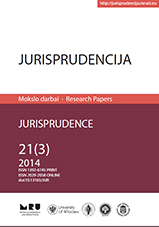Harassment in the Workplace: The Legal Context
Harassment in the Workplace: The Legal Context
Author(s): Graeme Lockwood, Vidushi MardaSubject(s): Law, Constitution, Jurisprudence
Published by: Mykolas Romeris University
Keywords: employer; labour law; harassment; case law; legal liability
Summary/Abstract: The occurrence of harassing behaviour in the work environment is a wellestablished problem in the modern workplace. Harassment manifests itself in different behaviours, such as social isolation, silent treatment, rumours, false accusations, threats, ridicule, name calling attacking the victim’s private life or attitudes, excessive criticism, monitoring of work, withholding information or depriving responsibility and physical or verbal aggression. There is widespread evidence that harassing conduct can cause a wide range of psychological and work-related harm, including diminished work performance, lower job satisfaction, absenteeism, career interruptions, job loss, depression, and health problems. This article examines case law pursuant to antidiscrimination law and cases brought under the ambit of the Protection from Harassment Act 1997 (PHA, 1997) in the United Kingdom. Information on the flow of interpretive case law will no doubt continue to capture the attention of human resource and legal professions who need to be aware of potential legal liability in this domain. It is evident from the research that employers must deal with claims of harassment more effectively so as to guard against litigation. Human resource departments must adopt a more constructive and effective system for responding to harassment complaints. Individual employers need to identify the structural, organisational and cultural barriers that might impede an effective response to a complaint of harassment.
Journal: Jurisprudencija
- Issue Year: 21/2014
- Issue No: 3
- Page Range: 667-682
- Page Count: 16
- Language: English

